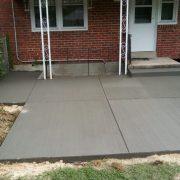Concrete disadvantages
For centuries, one of the most common materials used in construction has been concrete. Formed from hardened cement, concrete has been used for everything from roads to foundations for houses. However, as technology is advancing, concrete is no longer the ultimate construction tool. It has a variety of disadvantages which must be considered before use.
History
The use of concrete dates back to many ancient civilizations such as The Romans, who used concrete for everything from buildings to aqueducts. The Romans were also among the first to experiment with the mixture of additives in concrete. They understood that mixing it with certain things makes it water resistant and less prone to cracking under pressure.
Function
Concrete is still known for its durability and longevity. As with any building material, it has its share of fully acceptable alternatives. Wood is often designed to be load bearing, especially bases, and can be treated to resist the negative effects of moisture and termites. Steel is strong and profitable, and can be ideal in areas infested by insects. Insulated steel panels are also often used instead of concrete for building walls.
Considerations
A major disadvantage is that all concrete structures crack eventually. Concrete may also break as a result of the contraction, which occurs when it dries. These cracks develop within days of the start of the structure. This usually does not limit the durability of a structure.
Effects
Another disadvantage of concrete is its low thermal conductivity. As concrete is typically used as a layer of fireproofing between the walls it can be seriously damaged when exposed to intense heat. Concrete helps contain the spread of fire, but in the process becomes useless.
Caveat
Concrete also corrodes easily when exposed to seawater. Take quick action if the concrete is completely submerged for extended periods of time. Concrete can be worn by the waves and sand and other oceanic materials.






